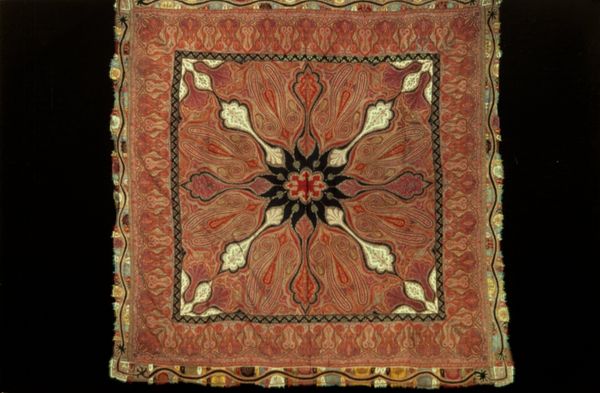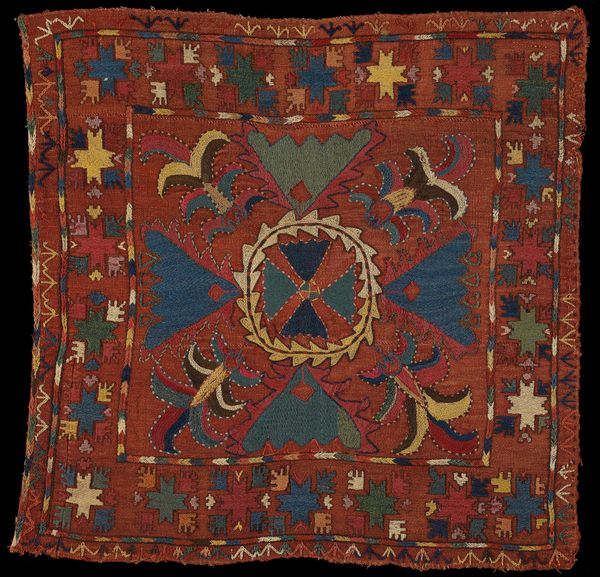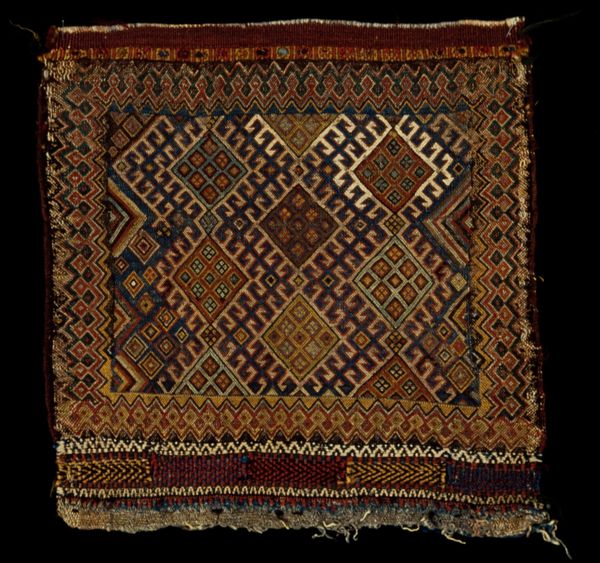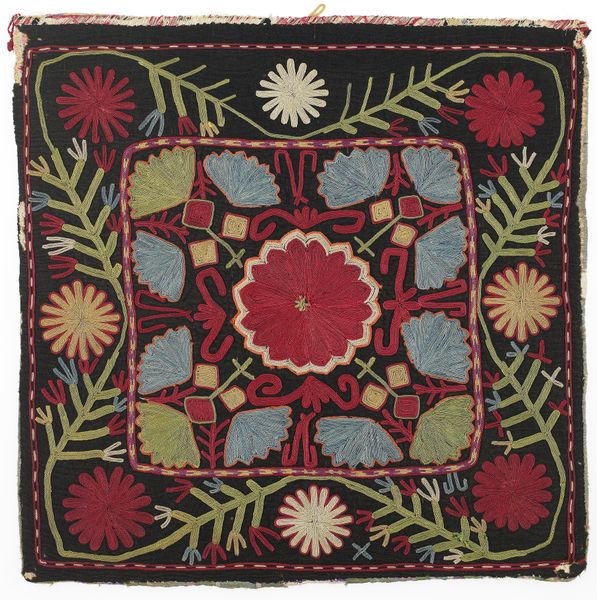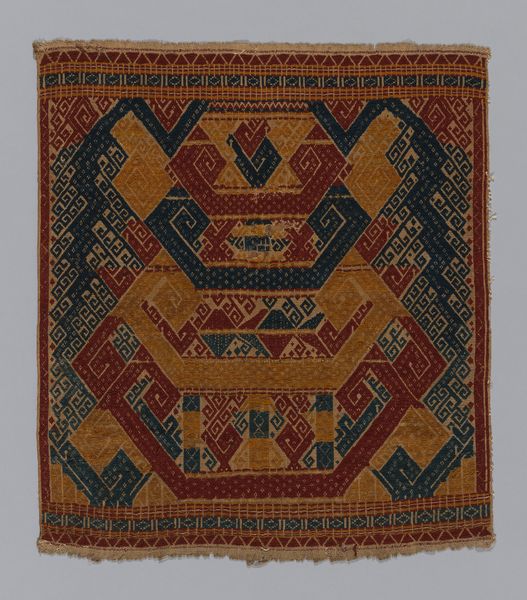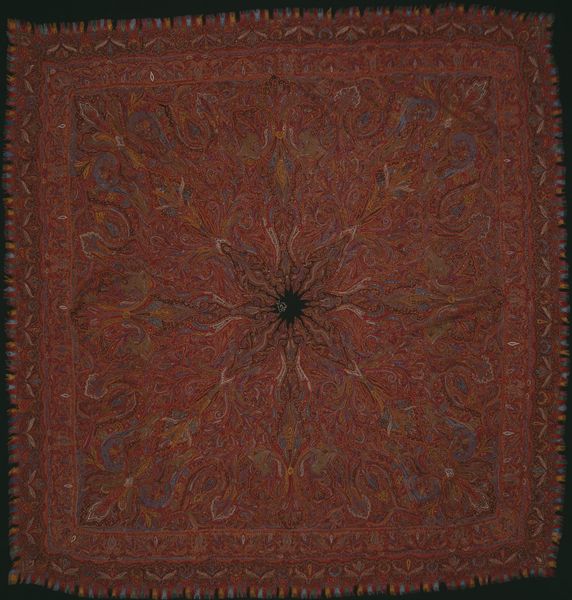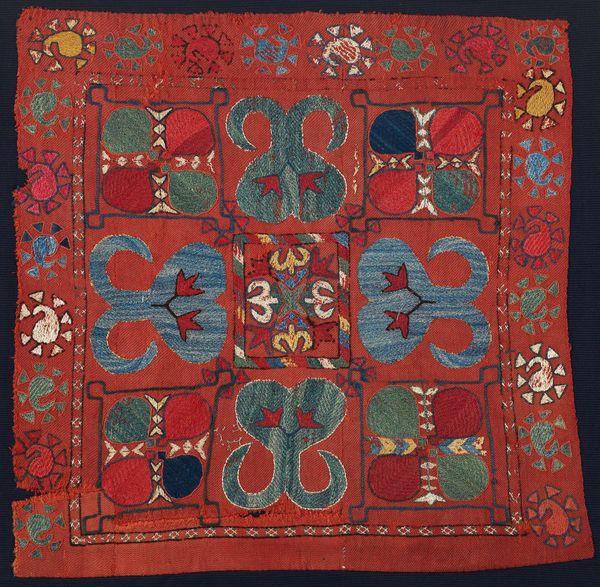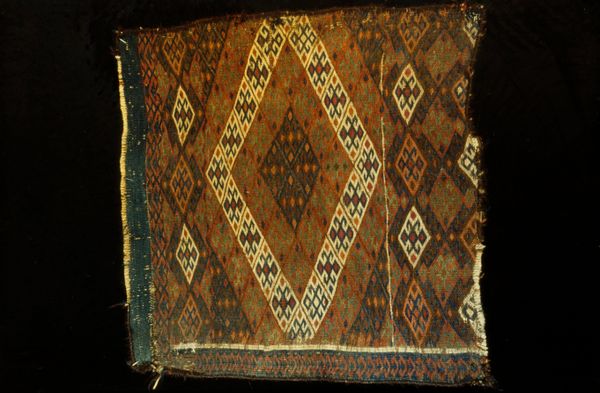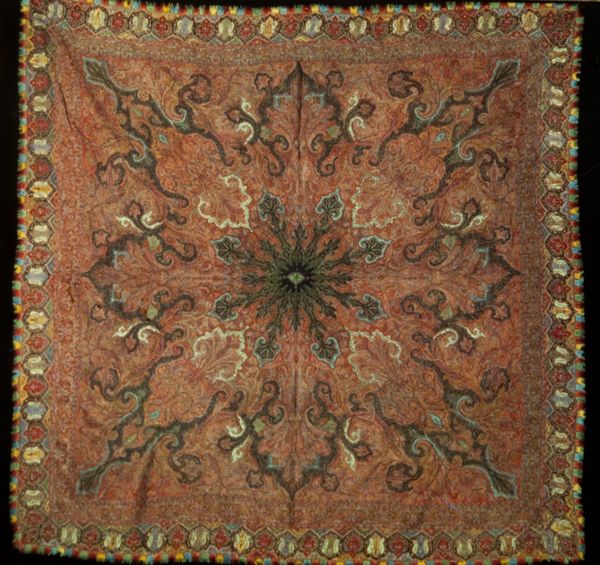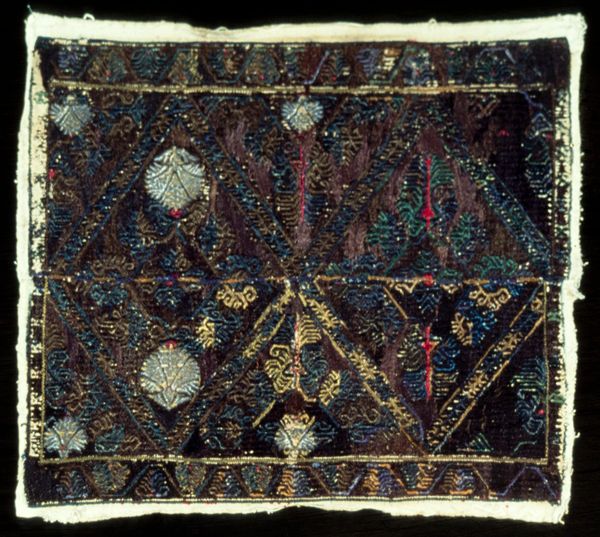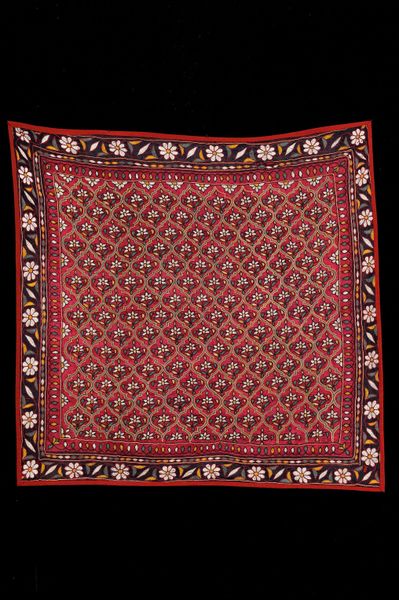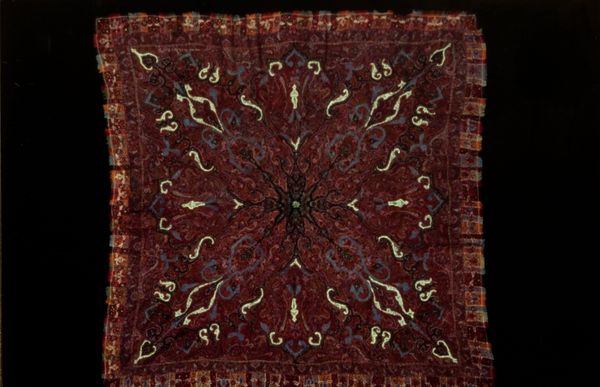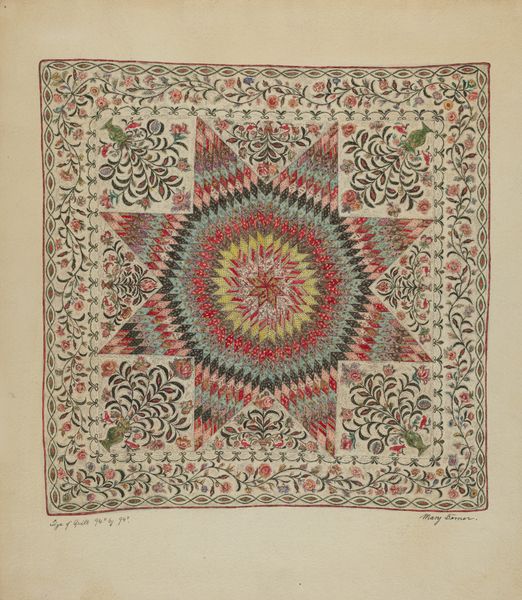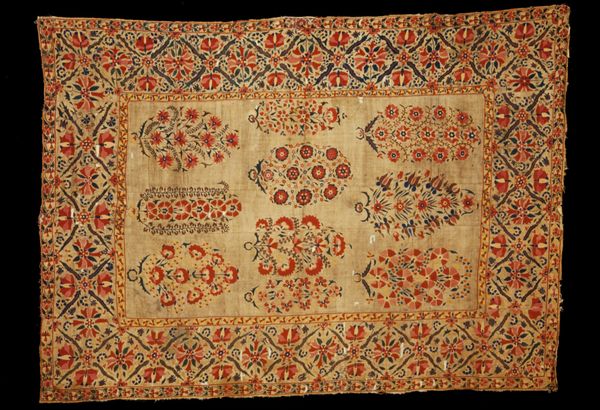
textile
#
textile
#
geometric pattern
#
organic pattern
#
geometric
#
orientalism
#
repetition of pattern
Copyright: Public Domain
Curator: Take a moment to admire this "Mat," a textile piece dating back to around the 19th century, now housed here at the Minneapolis Institute of Art. The artist is currently unknown. Editor: It’s striking how geometric yet strangely organic it feels. The mustard-yellow ground, those repetitive borders... it gives off a kind of meditative vibe, wouldn't you say? A small scale. You can easily feel you want it for a miniature room. Curator: Precisely! Consider the socio-political climate of the 19th century when it comes to artworks like this, and we are inevitably led to Orientalism, a movement heavily reliant on repeating forms and archetypes, often with only loose connection to any sort of Eastern original. What cultural narratives do these repeating forms invoke? The demand in Western countries led to a proliferation of designs of varying authenticity and cultural relevance. Editor: Ah, yes. The "mystique" of the East, rendered into a marketable commodity. But let's consider those recurring motifs themselves, the symbolic language here. That central medallion surrounded by floral and geometric designs is pretty rich in implied cosmological structures of that cultural region and time. Curator: While that's a valid interpretation, the specific origin and original cultural purpose of this particular piece are uncertain. Was this meant as a floor covering, a wall hanging, or something purely decorative? Who commissioned or purchased it, and for what reason? Its role within Western artistic conventions of the time speaks more plainly to the orientalist movement and marketing ploys of Western consumerism. Editor: But surely the visual echoes persist, even through the lens of Western appropriation? These patterns were loaded with meaning for generations before the piece arrived in the West. It's about layers of accumulated cultural knowledge. Curator: Perhaps. It serves as a potent example of how art objects can be reshaped, their meanings intentionally blurred or shifted as they move through diverse contexts and find different audiences across centuries and continents. It demonstrates that the value placed on art is so dependant on its surrounding institutions. Editor: Ultimately, I can't help but feel how it embodies our shared cultural memory—altered, interpreted, sometimes lost, yet undeniably present. Curator: It certainly offers a complex window into the artistic exchanges of the era and questions about authenticity, use, and artistic ownership. A textile still loaded with social and political lessons about the context of the art market.
Comments
No comments
Be the first to comment and join the conversation on the ultimate creative platform.
